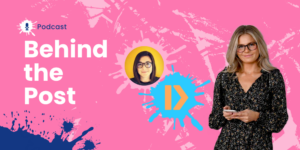The education industry is in turmoil. The pandemic has hit hard, and with online education enforced on children as young as 2-3 years old, parents and teachers are struggling alike. While every individual is impacted due to the changed conditions of formal education, those children who are too young yet to develop reading skills have been hugely impacted.
This is the phase where their brain development is at the highest level and yet they are dependent on others for absorbing new information. Screens are known for their harmful impact, and the limited interaction with peers, teachers and busy parents is hampering young children’s formal as well as informal learning.
One of the most neglected forms of educational learning is auditory-based learnings. Listening to meaningful content is an area that is still untapped. Audio-based information has been part of our culture for generations.
Grandparents and parents have for a long time used storytelling to not only bond but even pass on their value systems to the younger generation. Almost every grown up has a memory of their childhood with stories they would have heard, than read.
Stories that taught them morals and are often a part of their cultural upbringing. Telling stories orally also makes a child listen to the rise and fall in the voice, the pauses, the tone and ends up adding an additional layer of information in them.
Almost a generation back, radio was also a very popular form of entertainment as well as information. However, with the emergence of video platforms, audio and its advantages took a backseat.
With the pandemic outbreak, audio is now back in our lives – in the form of podcasts. However, the real impact it can make in education is still missing at large.
Audio content makes a great learning delivery mechanism for multiple reasons.
Suitable for any age
From newborns to adults, every individual reacts to sounds. Children who cannot read yet often have a higher understanding power, and can listen to content and have a significant impact on their vocabulary and knowledge.
Even in pandemic schooling, where their social interactions are severely impacted, they can use audio content offline to gain knowledge and can express their thoughts in an effective manner.
Easy to create
Any individual who is keen to share their thoughts and knowledge in absolutely any genre can use a basic recording setup and quickly create audio content. It is faster than video content, needs lesser resources and has multiple tools available for going live. While the quality of output might differ, the message will still be delivered effectively.
There is ease of creation, ease of subscription and ease of listening across platforms. Schools that might not be technologically advanced for a delivery team, or a teacher who wants to share quick notes can use audio to share details that can be paused, heard and re-heard based on the pace of the child.
Audio content is personal
What would a grandparent prefer – A voice-note from their grandchild or an email?
Audio content has much more information packed in the voice apart than just spoken words. The emotions, dialect, and background sounds can tell a lot more about the personality of the content creator, and make us more absorbed in the content at a deeper level.
For children who cannot yet write, teachers can always request for an audio note to evaluate their understanding of a specific topic. Audio is personal and makes them be able to evaluate a child much better in this distance learning mode and even beyond.
Listener advantages
Audio content can help listeners increase their expression power. Regardless of their level of spoken language, regular exposure can help users gain confidence in their oral skills. Younger children who are yet to develop their vocabulary gain immensely from environments that are surrounded by conversations.
According to a 2003 study called the 30-million-word gap, researchers Betty Hart and Todd Risley concluded that children need home environments that are “language rich” to have a headstart before starting school. While the research talks about parents and caregivers creating an appropriate environment, it would be interesting to use technology with audio content to help bridge this gap.
Passive content
Imagine waking up in the morning and listening to audio content while getting dressed, taking a walk, or driving to work. For time pressed individuals, audio offers the incredible option of content without being actively involved.
Children can also listen to content while doing their daily chores and playtime. We all have heard of nursery rhymes that make us learn numbers and alphabets that need multiple levels of repetition, and yet do not need complete active attention.
Audio as a medium is not entirely new to us, but it is possible that it has taken a pandemic to get audio back in the limelight.
And while every learning cannot be moved to an audio-only medium, it is possible that with the right additional support to help visualise the content, it can deliver great education. Given the advantages, audio content can benefit across verticals. After all, no one can deny that there is a magic in the human voice.
(Disclaimer: The views and opinions expressed in this article are those of the author and do not necessarily reflect the views of YourStory.)










